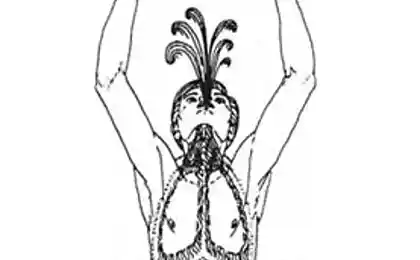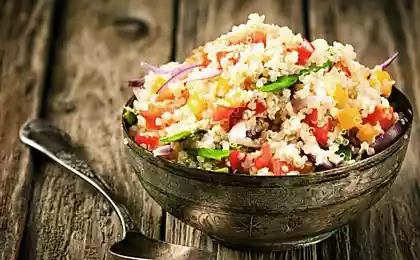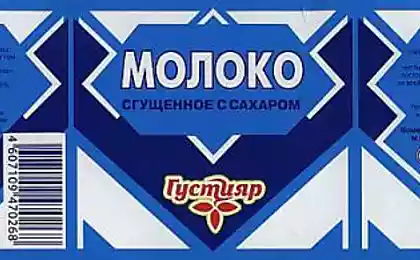566
GOST and TU — feel the difference
In the Soviet Union were two versions of the standards: GOST– almost all food products, and the only new types of food, or experienced party. THAT had a limited duration, not more than 5 years. Then for the new product was developed GOST.
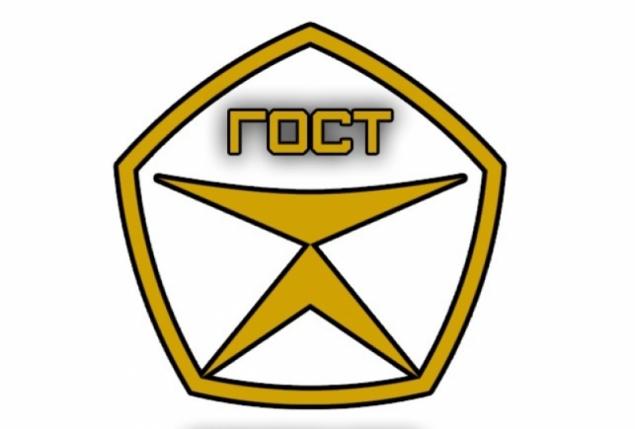
The standards are binding, that is, they had to fulfill. Violation of the requirements of the standard entailed the removal of the goods from the stores, a ban on the production of non-standard products.
Now the same products can be produced according to GOST and GOST R and TU (from specific manufacturers). All of them are voluntary!.
In Russia it is quite another thing: the mentality is much different... And manufacturers, even bona fide, began to produce food at THAT, not to comply with the requirements of GOST and GOST R. That is not forbidden by law is allowed...
Standards strictly regulated the raw materials that should be used for the production of a product used Supplement, approved recipe. To produce food according to Standards is not always beneficial to producers. The cost is high. And consequently reduced their competitiveness.
Food companies have gone the easier route, began to change the recipe, use substitutes for both the main and additional raw materials. And these products began to produce on the other.
Let us look at this situation with specific examples:
Meat products , for example, to develop a Doctoral sausage uses only the raw meat of the highest grade (it is completely absent connective tissue). Many of you remember the taste of this PhD. From 1 kg of meat can be done only 700 g of sausage. The cost is high, profitability is low. Much easier to replace a piece of raw meat for soy protein.
It is much cheaper. Yes and its water holding capacity is higher, it is possible to add more water, and therefore more sausages to make. Before a sausage called using a brand name Doctor Extra, a New Doctoral, Doctoral, village and the like.
But then forbade manufacturers to use a brand name similar to it to degree of mixture of words. But they came out of the situation – call the Doctor.
Now we can produce meat, meat-containing products and analogues of meat products.
According to the standards:
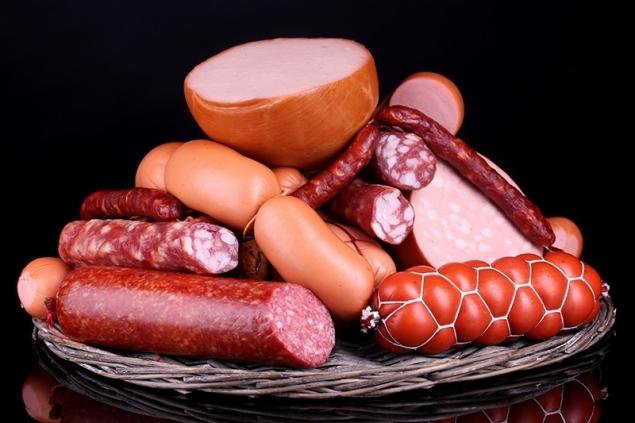
The dairy industry
A similar pattern in the dairy industry. Dairy produce, dairy composite and milk-containing products. In composite dairy products add non-dairy raw materials, but not for the purpose of its replacement, and to expand the range. For example, yogurt with fruit pieces or jam, curd with raisins.
The composition of milk products add a variety of non-dairy components that have replaced raw milk. They milk must be at least 20%, and milk fat – not less than 50 %. Here can be used soy protein oils – palm oil, modified fats. You understand that much more profitable to produce milk-containing products.
Recommendations for selection of dairy products are the same. Readthe markings, especially the composition. Don't be fooled by the familiar packaging. Sometimes unscrupulous manufacturers use well-known brands for marking their fake products.
As an example, the well-known blue packaging for milk condensed with sugar can used for packing of milk-containing canned goods, and even be called "Condensed milk". We used simply to call it. This habit they use.
Oil and fat products Now on oil and fat products. The last century produced margarine. We have become accustomed to it. It is specially developed to replace butter. The trouble is that it is produced from modified vegetable oils – hydrogenated and interesterified. Fry in margarine good, but the use of modified oils may lead to unfavourable consequences. Recently in our market there is a new product with "pure Russian" title SPREAD. In English – a product for spreading. The spread is creamy-vegetable, vegetable butter fat.
And these foods belong to different food groups. Creamy vegetable to milk, it is milk fat 50-95%.
Butter (milk fat 15-49%) and vegetable fat (may be without milk fat) spread is already to fat and oil products. In my opinion, is consumer fraud with the permission of the state. These spreads can be attributed to the butter or ordinary Margarines, and their price is significantly higher...
Here You have to choose, based on their capabilities. I believe that it is better to choose natural cow or vegetable oil. There will be more good and no harm.
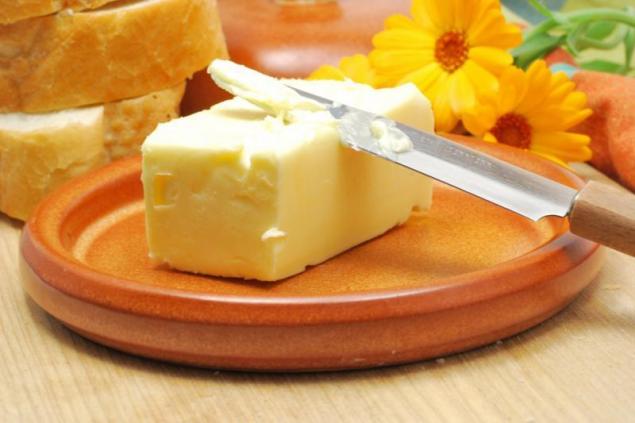
The quality of tea
A few words about the tea. Although we have a tea the standard, but many tea-packing factories produce their products on the other. Of course, we in the Krasnodar region has tea plantations, but their raw materials are not enough. Factory tea buying in tropical countries, and in our factories is carried out by blending (mixing) of different varieties of tea, packaged and sent to market. Profitable to buy cheap tea or old tea, then mix it with the more valuable varieties to give more or less "decent" taste.
Find high quality tea is problematic.
Some signs of poor tea:
But there are some pitfalls. Some unscrupulous manufacturers are using increased requirements of consumers to quality of the product. They can point to their fake product GOST, but not the one reglementary the quality of the product itself which is produced, for example, packaging.
In this case, we recommend you check out the standard listed on the product packaging. Just go online and enter in the search engine specified by GOST. And once everything will be clear. If it is written specific name of the product, such as cooked sausage, and the phrase "specifications", "General technical conditions", then this product is produced according to the standard.published
Source: roscontrol.com/community/article/kakiie-produkty-pitaniia-pokupat-gostovskiie-ili-tushnyie/#

The standards are binding, that is, they had to fulfill. Violation of the requirements of the standard entailed the removal of the goods from the stores, a ban on the production of non-standard products.
Now the same products can be produced according to GOST and GOST R and TU (from specific manufacturers). All of them are voluntary!.
- GOST – state standard applies not only in Russia but also in CIS countries
- GOST R – state standard of Russia
In Russia it is quite another thing: the mentality is much different... And manufacturers, even bona fide, began to produce food at THAT, not to comply with the requirements of GOST and GOST R. That is not forbidden by law is allowed...
Standards strictly regulated the raw materials that should be used for the production of a product used Supplement, approved recipe. To produce food according to Standards is not always beneficial to producers. The cost is high. And consequently reduced their competitiveness.
Food companies have gone the easier route, began to change the recipe, use substitutes for both the main and additional raw materials. And these products began to produce on the other.
Let us look at this situation with specific examples:
Meat products , for example, to develop a Doctoral sausage uses only the raw meat of the highest grade (it is completely absent connective tissue). Many of you remember the taste of this PhD. From 1 kg of meat can be done only 700 g of sausage. The cost is high, profitability is low. Much easier to replace a piece of raw meat for soy protein.
It is much cheaper. Yes and its water holding capacity is higher, it is possible to add more water, and therefore more sausages to make. Before a sausage called using a brand name Doctor Extra, a New Doctoral, Doctoral, village and the like.
But then forbade manufacturers to use a brand name similar to it to degree of mixture of words. But they came out of the situation – call the Doctor.
Now we can produce meat, meat-containing products and analogues of meat products.
According to the standards:
- In meat products the meat should be at least 60% (previously 100%).
- There are meat-containing, meat-vegetable (30-60%) and vegetable and meat (5-30%).
- In the analogues of meat is not more than 5%.

The dairy industry
A similar pattern in the dairy industry. Dairy produce, dairy composite and milk-containing products. In composite dairy products add non-dairy raw materials, but not for the purpose of its replacement, and to expand the range. For example, yogurt with fruit pieces or jam, curd with raisins.
The composition of milk products add a variety of non-dairy components that have replaced raw milk. They milk must be at least 20%, and milk fat – not less than 50 %. Here can be used soy protein oils – palm oil, modified fats. You understand that much more profitable to produce milk-containing products.
Recommendations for selection of dairy products are the same. Readthe markings, especially the composition. Don't be fooled by the familiar packaging. Sometimes unscrupulous manufacturers use well-known brands for marking their fake products.
As an example, the well-known blue packaging for milk condensed with sugar can used for packing of milk-containing canned goods, and even be called "Condensed milk". We used simply to call it. This habit they use.
Oil and fat products Now on oil and fat products. The last century produced margarine. We have become accustomed to it. It is specially developed to replace butter. The trouble is that it is produced from modified vegetable oils – hydrogenated and interesterified. Fry in margarine good, but the use of modified oils may lead to unfavourable consequences. Recently in our market there is a new product with "pure Russian" title SPREAD. In English – a product for spreading. The spread is creamy-vegetable, vegetable butter fat.
And these foods belong to different food groups. Creamy vegetable to milk, it is milk fat 50-95%.
Butter (milk fat 15-49%) and vegetable fat (may be without milk fat) spread is already to fat and oil products. In my opinion, is consumer fraud with the permission of the state. These spreads can be attributed to the butter or ordinary Margarines, and their price is significantly higher...
Here You have to choose, based on their capabilities. I believe that it is better to choose natural cow or vegetable oil. There will be more good and no harm.

The quality of tea
A few words about the tea. Although we have a tea the standard, but many tea-packing factories produce their products on the other. Of course, we in the Krasnodar region has tea plantations, but their raw materials are not enough. Factory tea buying in tropical countries, and in our factories is carried out by blending (mixing) of different varieties of tea, packaged and sent to market. Profitable to buy cheap tea or old tea, then mix it with the more valuable varieties to give more or less "decent" taste.
Find high quality tea is problematic.
Some signs of poor tea:
- After steeping black tea, open the teapot and smell the tea leaves. If there is a smell of hay or grass, then tea old.
- Look at tea in a white Cup. If the edges of the rim of the Cup tea color with a greenish hue, the tea is too old.
But there are some pitfalls. Some unscrupulous manufacturers are using increased requirements of consumers to quality of the product. They can point to their fake product GOST, but not the one reglementary the quality of the product itself which is produced, for example, packaging.
In this case, we recommend you check out the standard listed on the product packaging. Just go online and enter in the search engine specified by GOST. And once everything will be clear. If it is written specific name of the product, such as cooked sausage, and the phrase "specifications", "General technical conditions", then this product is produced according to the standard.published
Source: roscontrol.com/community/article/kakiie-produkty-pitaniia-pokupat-gostovskiie-ili-tushnyie/#
13-year-old girl created a piezoelectric wind generator for $5
Assessment of joint mobility according to Hippocrates












